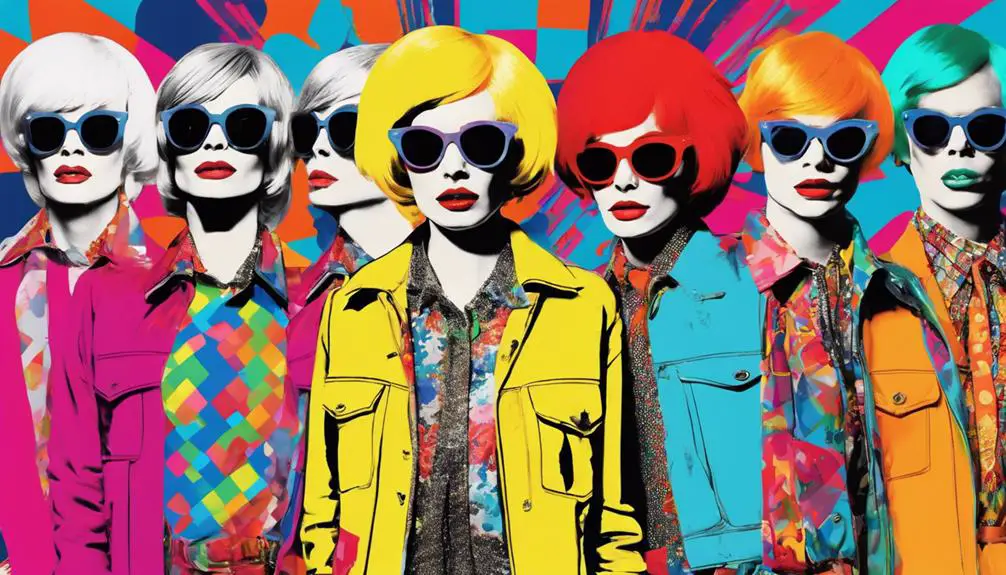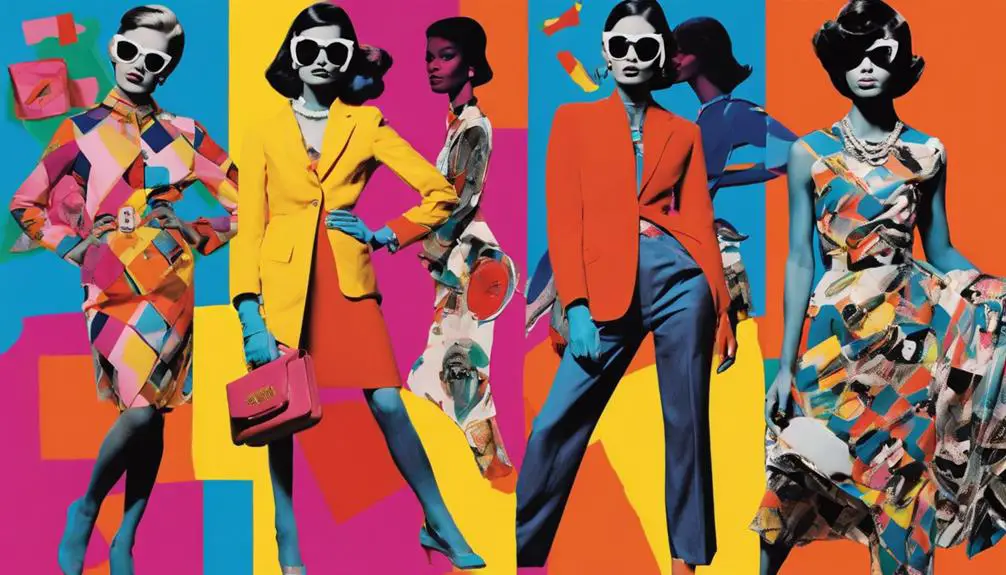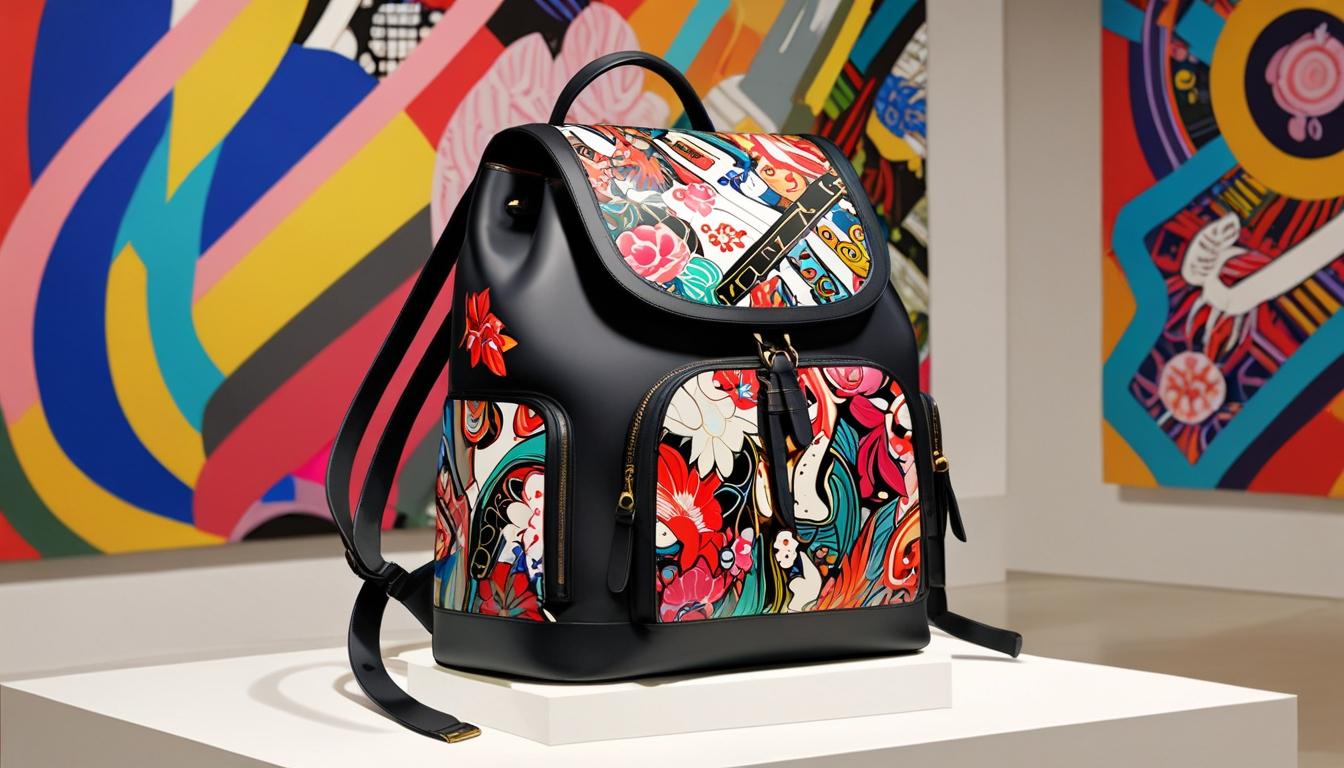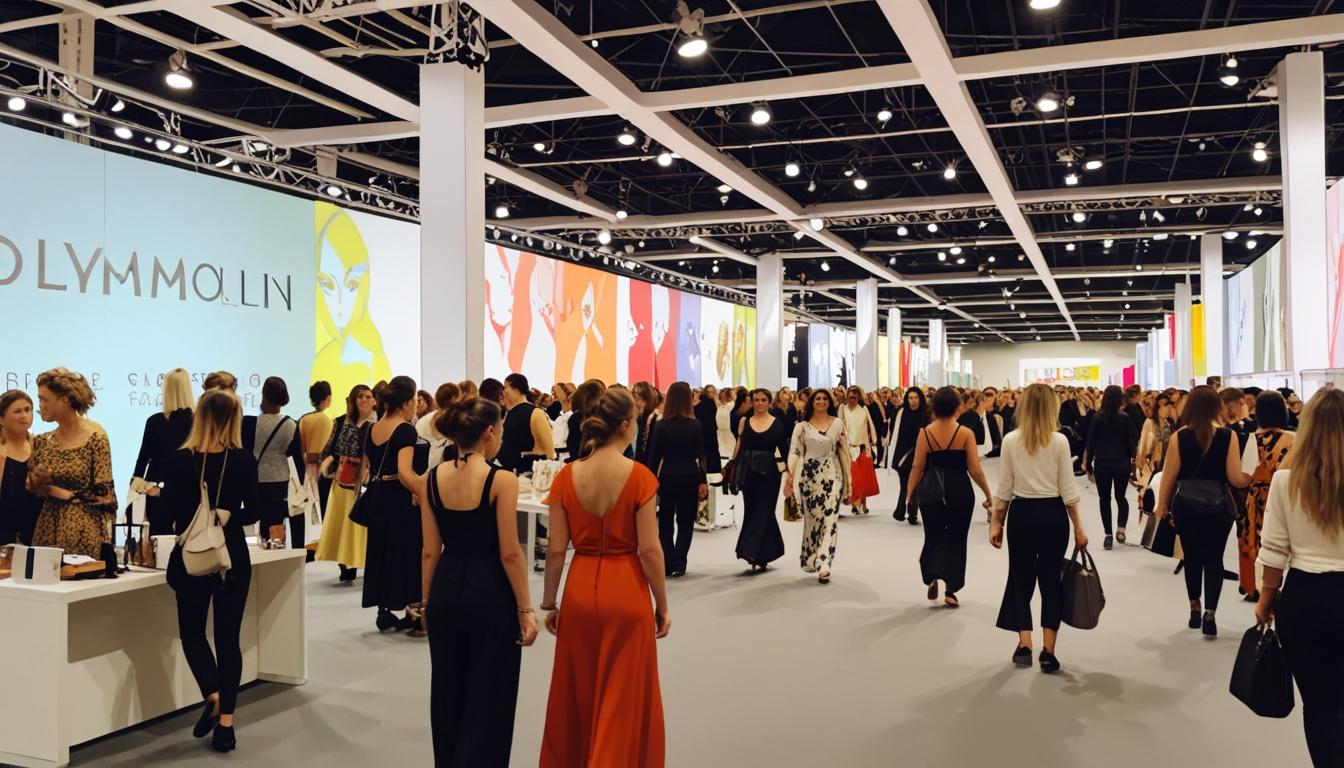You might not realize that Andy Warhol's fashion choices were just as revolutionary as his art, often blurring the lines between the two. His unique ability to merge high fashion with everyday wear not only set trends but also sparked conversations about identity and consumer culture. As you explore the nuances of his signature style, you'll uncover how these moments shaped not only his personal brand but also the broader cultural landscape. What might surprise you is how his influence persists in today's fashion world, challenging conventional norms in ways you might not expect.
Warhol's Signature Style Choices

Andy Warhol often showcased a unique blend of casual and formal styles that defined his signature look. You can't help but admire how he effortlessly combined a blazer, shirt, tie, and jeans to create an aesthetic that's both polished and relaxed. This distinctive approach not only reflected his personality but also captured the essence of the Pop art movement, where bold choices were celebrated.
One of Warhol's most recognizable features was his iconic platinum blonde hairstyle, which became emblematic of the vibrant art scene of the 1960s. This striking style influenced countless hair trends for decades, making it a defining characteristic of his identity. Alongside his hair, Warhol's choice to frequently wear clear glasses added an intellectual flair to his outfits, cementing his status as a fashion icon within the art world.
His love for double-breasted blazers and layering techniques added depth and versatility, allowing him to shift seamlessly between casual and formal settings. And let's not forget Warhol's fondness for vintage Levi's 501s—he wore them even under a tuxedo! This laid-back yet stylish approach showcased his playful nature while also challenging traditional fashion norms.
In blending these elements, Andy Warhol crafted a signature style that didn't just resonate with his artistic vision; it also left an indelible mark on the fashion landscape, inspiring future generations to embrace their unique blend of styles.
The Fusion of Art and Fashion
At the intersection of art and fashion lies a vibrant landscape shaped by visionary thinkers like Warhol. He believed that clothing could transcend mere utility, evolving into a powerful medium for artistic expression and identity. One of his most famous creations, the "Souper dresses," showcased this philosophy brilliantly. These whimsical pieces, adorned with printed images of Campbell's soup cans, seamlessly merged commercial fashion with Warhol's pop art aesthetic, turning everyday attire into wearable art. Additionally, similar to how vintage Ralph Lauren pieces reflect distinct cultural narratives, Warhol's designs often challenged conventional norms and invited viewers to rethink the purpose of fashion vintage Ralph Lauren identifiers.
Warhol's influence extended far beyond these dresses. His collaborations with designers like Jean Charles de Castelbajac and Stephen Sprouse illustrated how his distinctive artwork could inspire high fashion collections. Through bold colors and graphic designs, he not only left an indelible mark on the fashion landscape but also sparked trends that resonated within both streetwear and couture.
Moreover, Warhol elevated fashion shows to the status of performance art, pushing designers to infuse elements of theatricality and visual storytelling into their presentations. This transformation encouraged a dynamic interplay between the runway and the gallery, inviting audiences to experience fashion as both an aesthetic and a narrative form.
In essence, Warhol's innovative approach to fashion articulated a new vision where art and style converged, illustrating that what we wear can reflect deeper cultural meanings. As you explore his iconic moments, you'll discover a legacy that continues to inspire the fusion of art and fashion today.
Cultural Impact of Warhol's Aesthetic

Cultural resonance defines the lasting impact of Warhol's aesthetic on the fashion world. His bold colors and graphic designs not only revolutionized pop art in the 1960s but also paved the way for a new era in fashion, merging commercialism with artistic expression. The iconic Campbell's soup cans, which he transformed into cultural symbols, inspired innovative designs like the "Souper Dresses." These garments linked fine art directly to consumer fashion, allowing everyday people to wear a piece of art.
Warhol didn't just stop at creating art; he collaborated with designers like Jean Charles de Castelbajac and Moschino, showcasing how his vision remained relevant in contemporary collections. His aesthetic principles and bold commentary on celebrity and consumer culture continue to resonate today, influencing modern discussions around identity and style. You can see echoes of Warhol's work in the designs of Stephen Sprouse, who embraced vibrant colors and graphic elements reminiscent of Warhol's approach.
Moreover, the "Factory" culture, with figures like Edie Sedgwick at the forefront, epitomized the blend of avant-garde cinema and fashion, inspiring countless designers and artists for generations. Warhol's ability to blur the lines between art and fashion not only redefined aesthetic norms but also encouraged a dialogue about what it means to be fashionable in a consumer-driven society. This cultural impact is a reflection of Warhol's genius, reminding you that fashion isn't just about clothing; it's a canvas for artistic expression and commentary.
Iconic Accessories and Trends
Five iconic accessories from the 1960s are directly tied to Warhol's influence on fashion trends. One of the most notable accessories he popularized was clear glasses, which became synonymous with intellectual and artistic personas. You might remember how these glasses complemented various outfits, creating a chic look that still resonates today. Warhol's bold statement accessories, like oversized jewelry and dramatic hats, emphasized individuality, paving the way for contemporary designs that you see on runways now.
Additionally, his iconic platinum blonde hairstyle wasn't just a fashion choice; it symbolized rebellion and artistic expression, influencing hair trends well into the 1970s and beyond. When you think of safari jackets, remember that Warhol made them a stylish option, blending functionality with high-fashion aesthetics. These lightweight jackets, often adorned with multiple pockets, became a staple in his wardrobe.
One of his most daring creations, the "Souper Dress," featuring Campbell's soup can imagery, merged art and fashion in a way that created a cultural moment. This playful yet bold piece showcased how fashion could be a form of wearable art, a concept that designers like Karl Lagerfeld and even Paulette Goddard embraced in their own unique styles. Warhol's influence on these iconic accessories and trends reshaped the fashion landscape, making his signature flair an enduring part of fashion history.
Legacy in Modern Fashion

Andy Warhol's legacy in modern fashion is indisputably profound, with countless designers drawing inspiration from his groundbreaking work. His bold use of color and graphic designs, synonymous with pop art, continues to shape contemporary collections. You might find it fascinating how Warhol's iconic Souper Dresses, adorned with Campbell's soup can imagery, symbolize the perfect fusion of art and fashion. These pieces have inspired limited-edition releases from modern brands, proving that the line between these two worlds has blurred, thanks to Warhol.
Collaborations, such as those with Moschino and Jeremy Scott, highlight just how relevant Warhol's aesthetic remains today. Designers often infuse vibrant palettes and eye-catching prints into their work, echoing the energy of the Velvet Underground, a band that Warhol famously promoted. This synergy between music and fashion, rooted in Warhol's vision, breathes new life into contemporary style.
Moreover, fashion campaigns and editorials frequently reference Warhol's art, reinforcing his impact on the industry. Editor Diana Vreeland, known for her bold fashion statements, would have certainly celebrated the way Warhol's influence permeates modern fashion. His ability to marry art and commerce inspires you to think creatively about your own fashion choices, encouraging a playful embrace of vibrant styles.
In essence, Andy Warhol's legacy isn't just about what he created; it's about the endless possibilities he opened up for future generations to explore, innovate, and express themselves through fashion.
Frequently Asked Questions
What Style Was Andy Warhol Best Known For?
When you think of pop culture's impact, Andy Warhol's style stands out. You'll notice his eclectic mix of tattered tuxedos and bold colors, reflecting celebrity influence and embracing a unique, unconventional fashion sense that redefined norms.
Was Andy Warhol a Fashion Icon?
Yes, Warhol's influence on fashion is undeniable. His daring fashion collaborations and unique style reshaped perceptions of self-expression in clothing, making him a true fashion icon who continues to inspire designers and artists today.
What Is Warhol's Artistic Style Called?
Did you know that Warhol created over 600 artworks using his unique techniques? His artistic style, known as Pop Art, considerably shaped cultural impact, blending commercial imagery with fine art to challenge societal norms and perceptions.
What Fashion Designers Were Influenced by Pop Art?
Many fashion designers embrace pop art influences in their work. You'll find designer collaborations featuring bold colors and iconic imagery, like Moschino and Calvin Klein, which cleverly blend art and contemporary fashion into striking collections.



